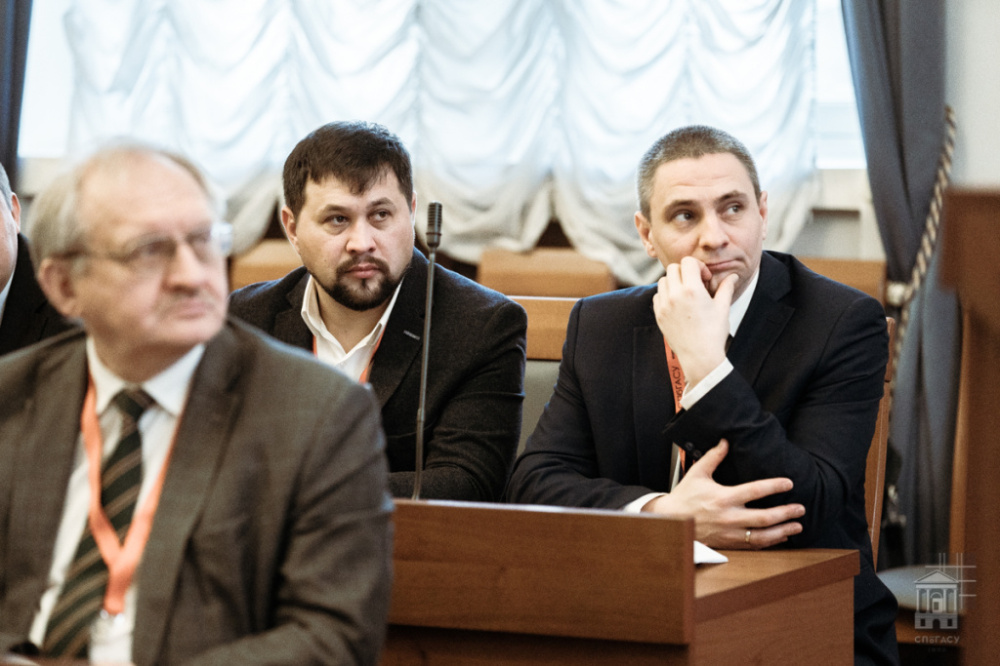 Participants of the plenary session
Participants of the plenary session
On 21–22 November, the Saint Petersburg State University of Architecture and Civil Engineering, together with the Russian Academy of Architecture and Construction Sciences and the Russian Engineering Academy, held the LXXVIII International Scientific and Practical Conference “Architecture – Construction – Transport – Economics”.
The information partners of the conference were the Consortium "Kodeks", the scientific and technical and production journal "Industrial and Civil Engineering", and the scientific and technical journal "Housing Construction".
The conference program included a plenary session, where a new publication on the Arctic was presented, 13 sections and one subsection, as well as an exhibition “Construction Art: First Textbooks and Creative Projects”, opened in the scientific and technical library of our university.
Plenary session
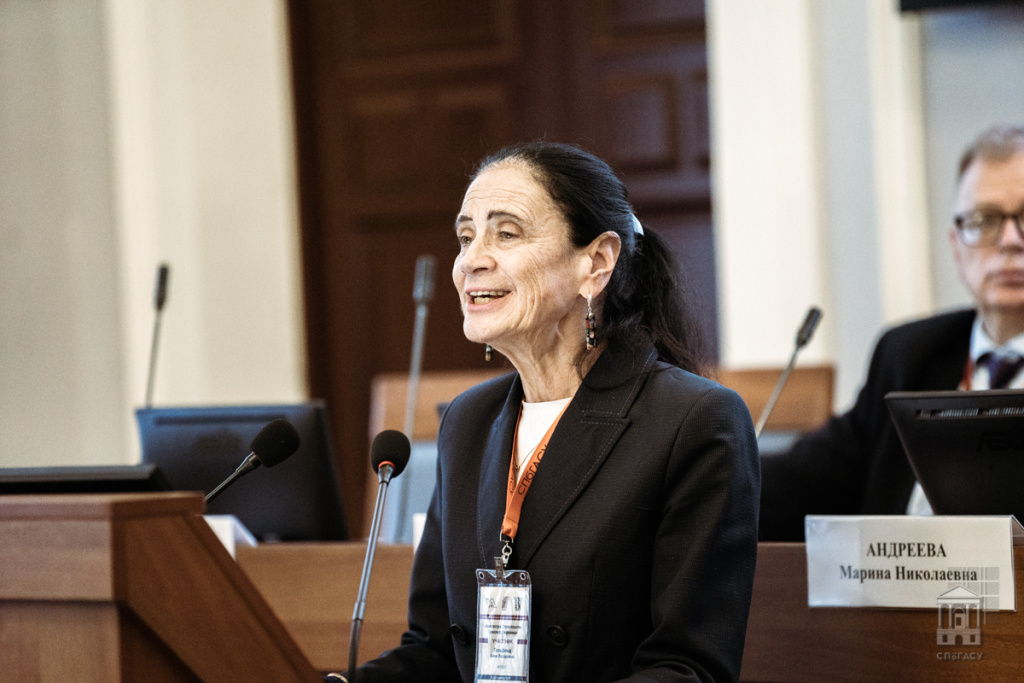 Anna Gelfond
Anna Gelfond Anna Gelfond, Head of the Department of Architectural Design at the Nizhny Novgorod State University of Architecture and Civil Engineering, spoke at the plenary session about cross-cutting methods for organizing open and closed public spaces using riding halls as an example. Nowadays, riding halls are mainly adapted for transport facilities (garages, depots) or exhibition spaces. They continue to function for their original functional purpose, since physical education and sports remain an important aspect of human life.
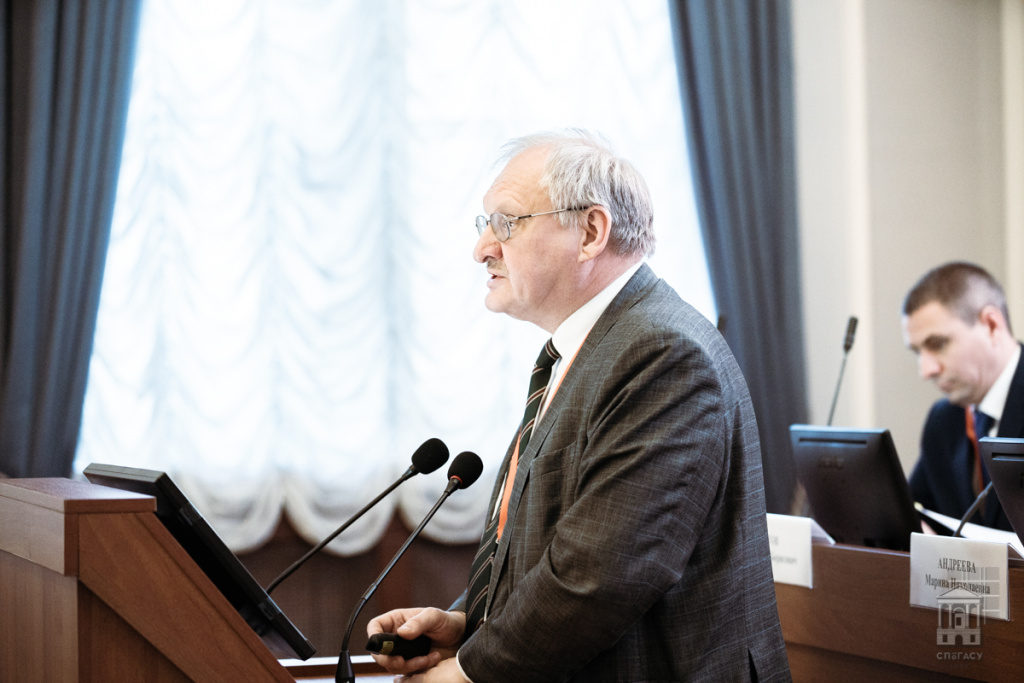 Anatoly Osokin
Anatoly OsokinAnatoly Osokin, Director of the Soil Testing Center, Head of the SPbGASU Department of Geotechnics, presented a report on "Modern Geotechnical Solutions for Preserving Historical Buildings During the Development of Underground Space. Experience of the SPbGASU Department of Geotechnics." Anatoly Ivanovich is confident that construction and restoration work should be preceded by a calculated geotechnical justification of the project, taking into account the development of additional settlements of both the restored object and neighboring structures. When carrying out restoration and new work on objects - architectural monuments - scientific and technical support of construction should be carried out on the basis of comprehensive monitoring.
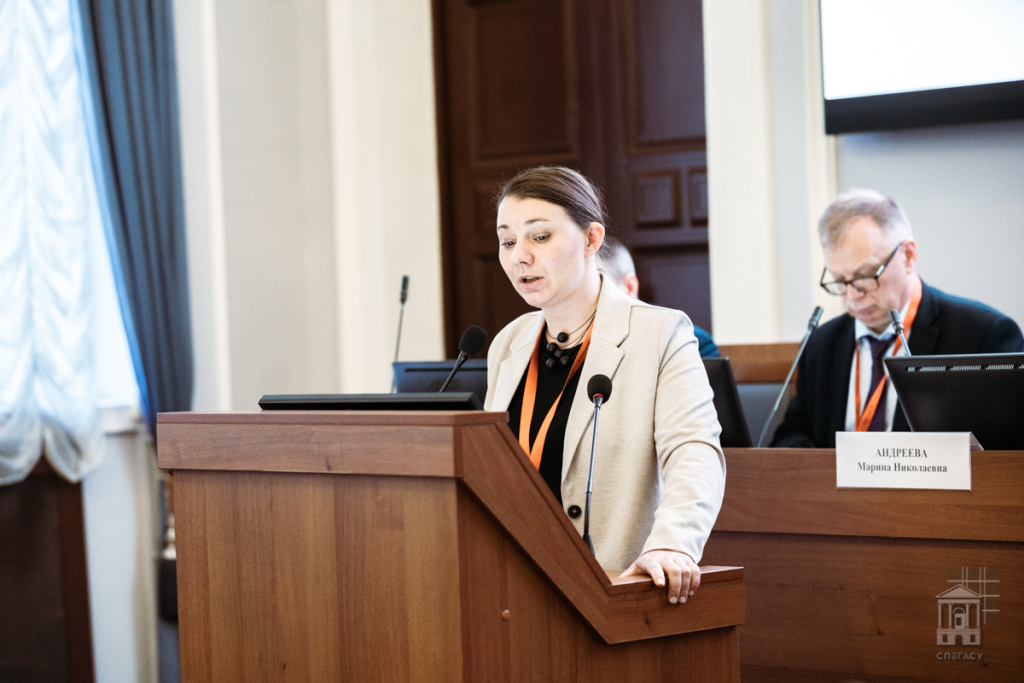 Nina Danilina
Nina DanilinaNina Danilina, Head of the Department of Urban Planning at the National Research Moscow State University of Civil Engineering, highlighted the topic of a multi-criteria approach to assessing the sustainability of urban development solutions and gave examples of cases of redevelopment of industrial zones in cities.
Aleksey Belous, Professor at the SPbGASU Department of Construction Economics and Housing and Utility Infrastructure, gave a report prepared together with Marina Vasilyeva, Senior Lecturer and PhD student at the Department, talking about the impact of digitalization on the pricing mechanism in construction and housing and utilities. The speaker recommended developing individual strategies for different territories, creating flexible adaptation mechanisms, strengthening the role of local communities, and developing interregional cooperation. "Digitalization is not just a trend, but a necessary tool for increasing the efficiency and transparency of pricing in construction and housing and utilities. The success of the transformation depends on the willingness of market participants to accept and adapt to changes," said Professor Belous.
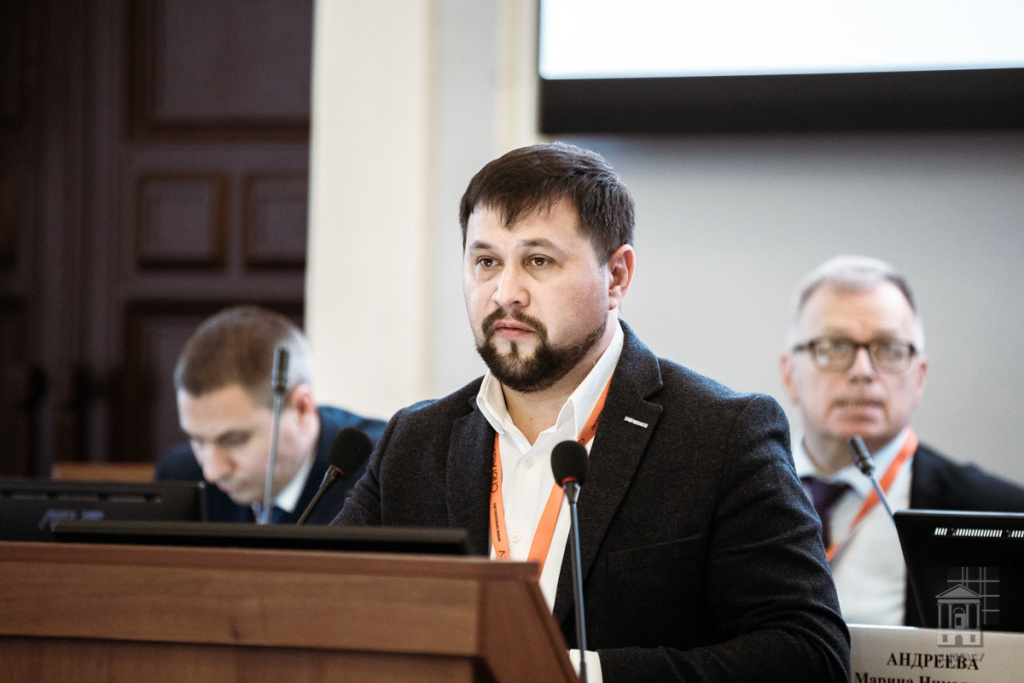 Vladimir Sharmanov
Vladimir Sharmanov Vladimir Sharmanov, process engineer at Etalon Group, discussed the use of information modeling technologies (TIM) in construction for lean manufacturing and occupational safety purposes. The audience learned from the report that lean manufacturing is an ideology and management concept based on a consistent desire to identify and eliminate non-production losses that arise during the work process, which involves improving quality and reducing costs by optimizing production technology, involving each employee and focusing on the consumer as much as possible. TIM is a process of collective creation and use of information about a structure that forms the basis for all decisions throughout the life cycle of a facility (from planning to design, release of working documentation, construction, operation, and demolition). According to Vladimir Sharmanov, the use of lean construction principles will increase labor productivity and improve the quality of construction products, build communications between construction participants, create worker access systems by visualizing hazardous areas, increase the responsibility of construction participants, etc.
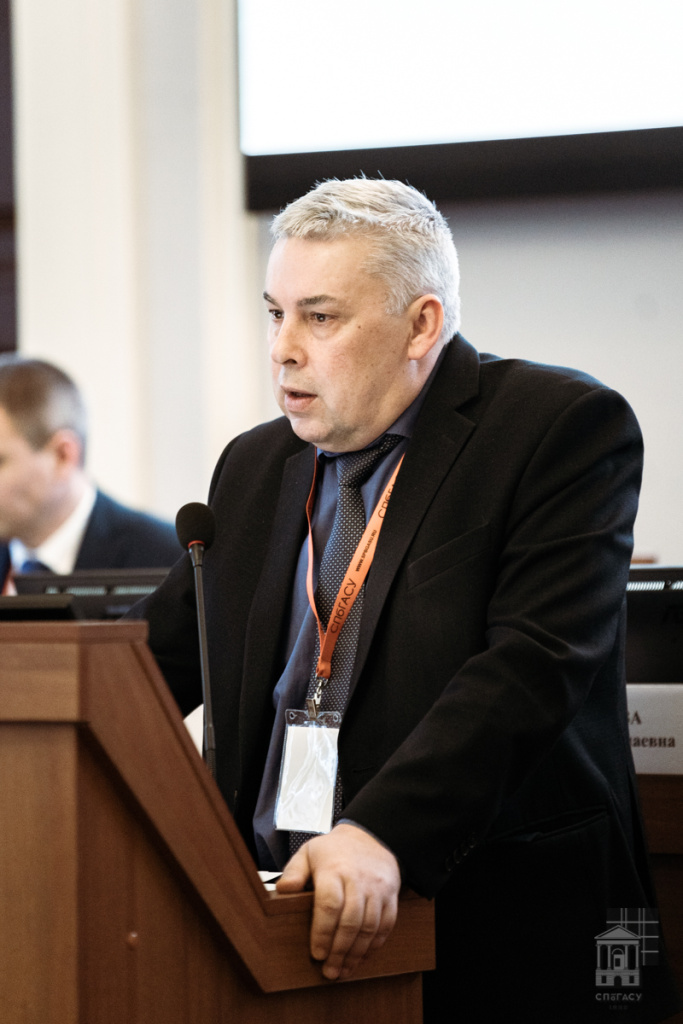 Yuri Fedorov
Yuri Fedorov Yuri Fedorov, chief engineer of the St Petersburg State Budgetary Institution Mostotrest, gave a report on the drawbridges of St Petersburg, the specifics of their maintenance and repair. Yuri Gennadyevich said that today there are 19 drawbridges in St Petersburg. The construction of three more is planned: the Bolshoi Smolensky Bridge, a bridge as part of the latitudinal highway for high-speed traffic, and the Novo-Admiralteysky Bridge. For the convenience of ground transport and pedestrians, Mostotrest has developed a unique online notification system. This information, as well as the most accurate drawbridge schedule for the current navigation season, are available on the organization's website and in the mobile application "Bridges of St Petersburg".
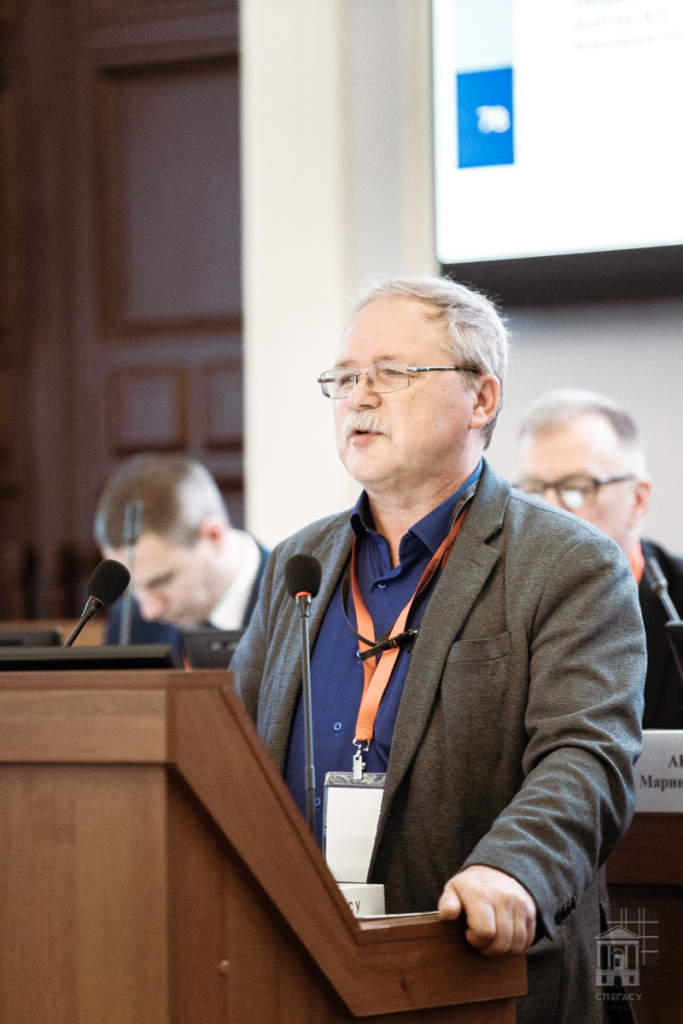 Fedor Perov
Fedor Perov The plenary session ended with a speech by Fedor Perov, Associate Professor at the SPbGASU Department of Architectural Design, who presented the collective monograph "The Arctic of SPbGASU" to the audience. Fedor Viktorovich said that the book was published on the initiative of the administration of our university. (The Arctic of SPbGASU: collective monograph. - St Petersburg: SPbGASU, 2024. - 544 p.)
According to Fedor Perov, the Arctic is a territory of strategic development, a territory of the future. The university has been working on this topic for a long time. The book tells about the scientists who studied it - many of them are no longer alive, but their work is continued by our contemporaries. The university conducts research in the format of expeditions, which is also described in the book. Representatives of our university visited Salekhard, Naryan-Mar, Vorkuta and other supporting cities of the North to develop projects aimed at their revival and development. In the process of work, the Departments of Architectural Design, Urban Planning, Architectural and Urban-Planning Heritage, Architectural Environment Design, Geotechnics and others interact with each other.
“I am confident that the practical implementation of promising developments will be an important step in the implementation of the Strategy for the Development of the Arctic Zone of the Russian Federation,” noted the Governor of St Petersburg Aleksandr Beglov, who had supported its publication, in the preface to the book.
Section "Urban Planning"
The "Urban Planning" section, moderated by Andrey Vaytens, Professor at the SPbGASU Department of Urban Planning, featured more than 25 reports from renowned scientists, teachers, postgraduates and master's students from St Petersburg, Moscow, Minsk, Tyumen, Irkutsk, Novosibirsk, Rostov-on-Don, Sevastopol, Saratov, Volgograd, and Yaroslavl. This was reported by Oksana Peslyak, Associate Professor at the SPbGASU Department of Urban Planning and secretary of the section. According to the lecturer, the topic of resettlement and territorial planning of large urbanized territories was widely presented. Many reports reflected the development of tourism and recreational infrastructure at the regional and local levels.
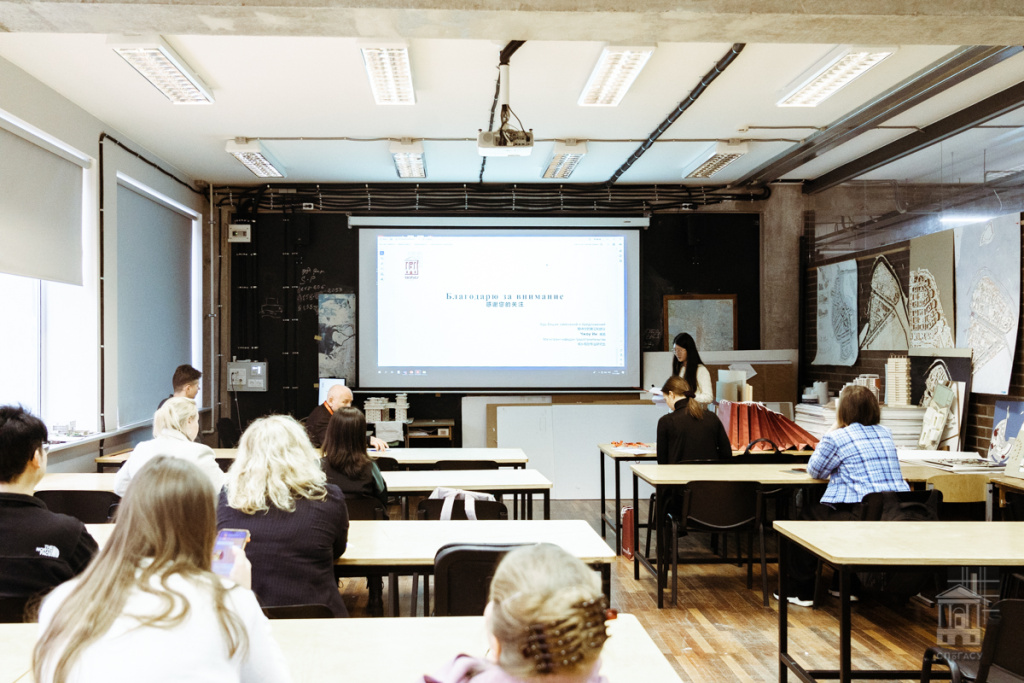 Section "Urban Planning"
Section "Urban Planning""A special place in the conference was occupied by reports devoted to the historical traditions of urban planning and design and still little-known pages in the biographies of famous architects and urban planners. No less interesting were the reports touching upon various methodological aspects of the formation of the urban environment and the study of urban planning facilities. The section aroused interest among students, postgraduates, young scientists, teachers and representatives of urban development management bodies. The opportunity to hold the conference in person and online allowed us to create a unique platform for the exchange of professional experience and ideas. Each report was full of practical examples and interesting original findings. The participants expressed hope for further cooperation and the implementation of joint projects, and also noted the importance of such meetings for the development of urban planning in the country," commented Oksana Peslyak.
Section "Construction Materials and Products"
36 reports were submitted for the section "Construction Materials and Products". According to Mikhail Zhavoronkov, Associate Professor at the SPbGASU Department ofTechnology of Construction Materials and Metrology and section moderator, the work was conducted in a mixed mode - in person and online.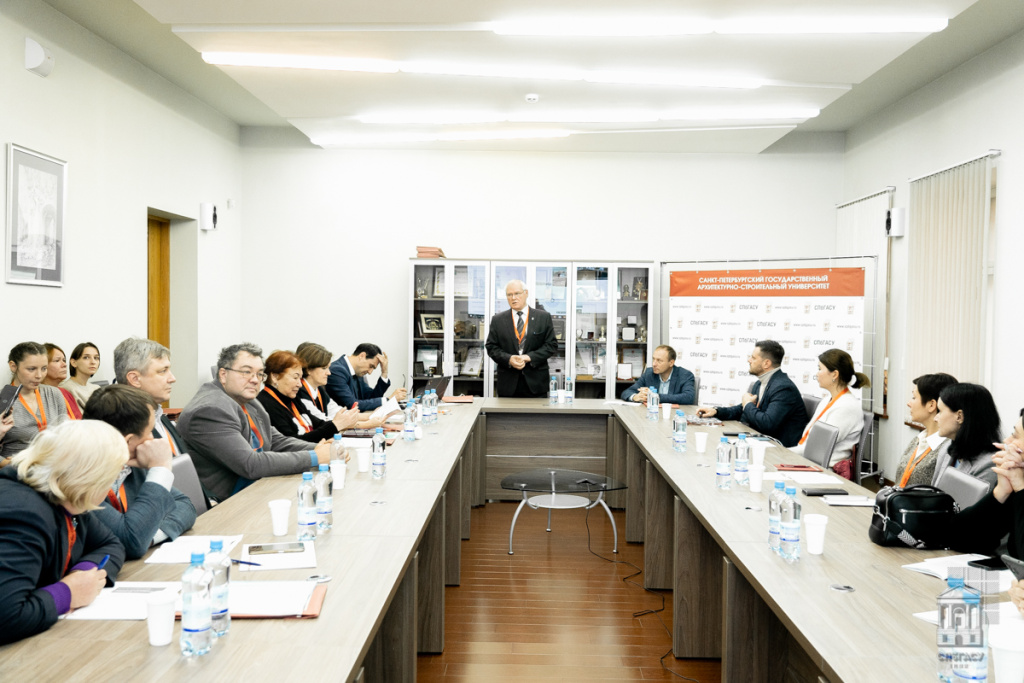
The reports were devoted to the study of the properties of both traditional and the most modern construction materials for various purposes, the development of quality control and assessment systems, methods of statistical analysis of test results, methods of designing building structures, the use of secondary raw materials in construction and other important issues of building materials science. Works related to the restoration of cultural and historical heritage sites and the building materials used in this process were of great interest.
Exhibition "Construction Art: First Textbooks and Creative Projects"
The exhibition "Construction Art: First Textbooks and Creative Projects" in the SPbGASU Scientific and Technical Library was timed to coincide with the opening of the conference. The exhibition presented publications from the early and mid-19th century: "Complete Instructions on How to Prepare Cheap and Best Mortar or Cement, Very Strong for Underwater Structures, Such as Canals, Bridges, Pools, Dams, Basements, Cellars, and Plastering Stone and Wooden Structures" by Russian inventor Egor Gerasimovich Cheliev; "Note on the Study of Soils of the Earth, Carried Out in the Art of Construction" by economist and engineer Matvey Stepanovich Volkov; lecture courses on construction materials, structural mechanics, and civil architecture, read by leading teachers of the Institute of Civil Engineers.
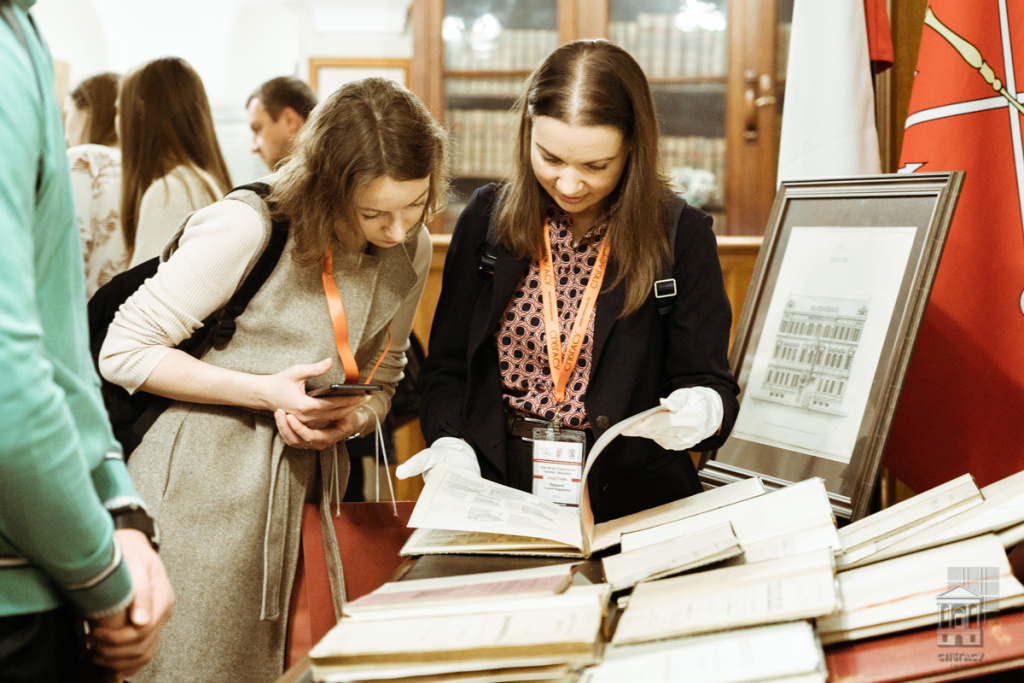 Exhibition "Construction Art: First Textbooks and Creative Projects"
Exhibition "Construction Art: First Textbooks and Creative Projects" Visitors were interested in the authentic works of watercolour painting by IGI students from the mid-19th century, reports on summer practical work by students from the late 19th century, and engravings by the Russian artist, master of drawing and architectural landscape, Mikhail Ivanovich Makhaev.

